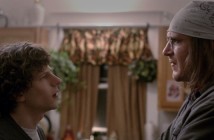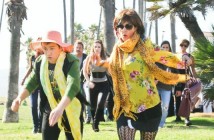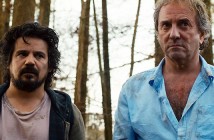Cast: Martín Piroyansky, Ailín Salas, Alejandro Awada
Director: Gabriel Medina
Country: Argentina
Genre: Drama | Horror
Official Trailer: Here
Many new Argentine films dream of the country. While the nation’s soap operas and television news prefer the city, some of its movies travel out to nature. Perhaps the most extraordinary exponent of this trend is Lisandro Alonso, who, along with Thai master Apichatpong Weerasethakul, is perhaps one of the strongest nature filmmakers in the world, capable of extracting existential and spiritual mystery from a few swaying trees. We might also mention Lucrecia Martel’s rural landscapes, although these, in Martel, are always juxtaposed with the interior design of bourgeoisie decadence. Equally noteworthy is Mariano Llinás’ Extraordinary Stories, with its real-time excursions down winding streams and tall grass, reminiscent of Alonso’s greatest long takes in his masterpiece, Los Muertos. Into this tradition – which includes many other films, some of which I haven’t seen yet, like Fadel’s Los Salvajes and Otheguy’s La León – walks The Vampire Spider, by Gabriel Medina.
A spare, lean plot devise sends a medicated, troubled, and urban young adult (played by Martín Piroyansky) on a feverish journey into the mountains and wilds of the province of Córdoba. He travels with his father to an isolated cabin, in the hopes of curing his panic attacks, only to get abruptly bitten by the titular and deadly arachnid. In order to save himself, he must get bitten again in order to cancel out the poison, which is complicated by the fact that he crushed the spider responsible for the initial bite. Since only the same species will do, a local guide leads Piroyansky into the distant lair of the vampire spiders. This lightweight story, quite transparently, acts as flimsy justification for sending a prototypical city boy on a rite of passage through the backwoods of Argentina. As the poison travels through his bloodstream, the cinematography becomes appropriately heightened, and the film reveals itself as wandering mood piece, a musical descending into a nightmare. Musical, because Medina structures his movie as a physical odyssey, a chronicle of bodies dancing through monumental landscapes, dancing the dance of weary trudging.
Exposition is meted out patiently or not at all, and what narrative there is lingers at the margins of what is told, always menacing and troubling, guessed at in a fleeting dream or unnerving prologue.
 Here, as in Alonso, what matters is the texture of movement, the rhythms of a visual journey, although Alonso is defter in paring down narrative detail. In his Los Muertos or La Libertad, there is no throwaway plot, even when there is plenty of storytelling. Exposition is meted out patiently or not at all, and what narrative there is lingers at the margins of what is told, always menacing and troubling, guessed at in a fleeting dream or unnerving prologue. Medina still clings to more traditional patterns of plotting and characterization, when what he really seems to be interested in, as the increasingly roving second half demonstrates, is the texture, the rhythms. The Vampire Spider swings uneasily between conventional clarity and art house vagueness, and the result is not entirely satisfying. Which is not to say that this proposed middle ground is impossible, only to point out that it is quite difficult, and can sometimes, as in The Vampire Spider, lead to works that are neither here nor there, neither really experimental nor enjoyably conventional.
Here, as in Alonso, what matters is the texture of movement, the rhythms of a visual journey, although Alonso is defter in paring down narrative detail. In his Los Muertos or La Libertad, there is no throwaway plot, even when there is plenty of storytelling. Exposition is meted out patiently or not at all, and what narrative there is lingers at the margins of what is told, always menacing and troubling, guessed at in a fleeting dream or unnerving prologue. Medina still clings to more traditional patterns of plotting and characterization, when what he really seems to be interested in, as the increasingly roving second half demonstrates, is the texture, the rhythms. The Vampire Spider swings uneasily between conventional clarity and art house vagueness, and the result is not entirely satisfying. Which is not to say that this proposed middle ground is impossible, only to point out that it is quite difficult, and can sometimes, as in The Vampire Spider, lead to works that are neither here nor there, neither really experimental nor enjoyably conventional.
The profound, personal connection established by these characters adds weight to their shared voyage.
 Still, the film manages to hold together, in large part because the interactions between Piroyansky’s city boy and his emotionally unstable rural guide (played by a rugged, soulful Jorge Sesán) are deeply poignant. Both are psychologically fragile, except one is diagnosed with knowable, medically treatable panic attacks, while the other, lost in his countryside blues, is simply defined as the local eccentric. Both, also, suffer the pangs of incomprehension, since their inner turmoils are trivialized, in the first case, as the manifestations of chemical imbalances, and in the second case, as the vagaries of a lunatic. This creates an effective if somewhat predictable buddy dynamic, where both, despite their different upbringings, unwittingly become the only people on earth who can understand each other, amidst the unearthly expanses of oneiric wilderness and lunar surfaces. The profound, personal connection established by these characters adds weight to their shared voyage. As in some action films – say, John Woo’s Hong Kong extravaganzas – the movements of two bodies amidst forbidding terrain trace a waltz of friendship, their camaraderie fostered by an increasingly coordinated slog through metaphoric hell.
Still, the film manages to hold together, in large part because the interactions between Piroyansky’s city boy and his emotionally unstable rural guide (played by a rugged, soulful Jorge Sesán) are deeply poignant. Both are psychologically fragile, except one is diagnosed with knowable, medically treatable panic attacks, while the other, lost in his countryside blues, is simply defined as the local eccentric. Both, also, suffer the pangs of incomprehension, since their inner turmoils are trivialized, in the first case, as the manifestations of chemical imbalances, and in the second case, as the vagaries of a lunatic. This creates an effective if somewhat predictable buddy dynamic, where both, despite their different upbringings, unwittingly become the only people on earth who can understand each other, amidst the unearthly expanses of oneiric wilderness and lunar surfaces. The profound, personal connection established by these characters adds weight to their shared voyage. As in some action films – say, John Woo’s Hong Kong extravaganzas – the movements of two bodies amidst forbidding terrain trace a waltz of friendship, their camaraderie fostered by an increasingly coordinated slog through metaphoric hell.
[notification type=”star”]70/100 ~ GOOD. …the film manages to hold together, in large part because the interactions between Piroyansky’s city boy and his emotionally unstable rural guide (played by a rugged, soulful Jorge Sesán) are deeply poignant. [/notification]



